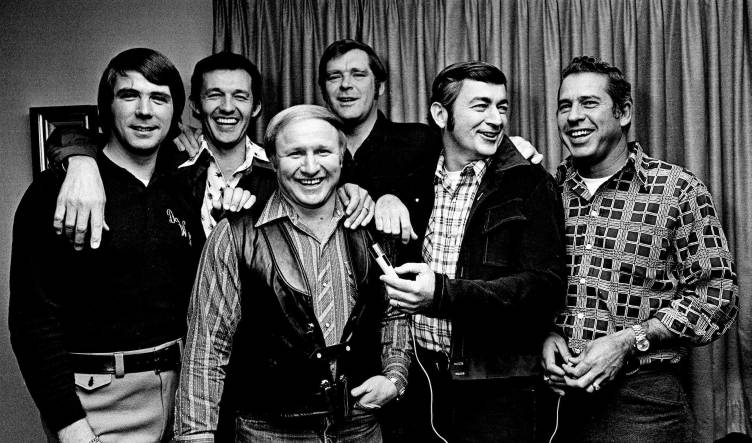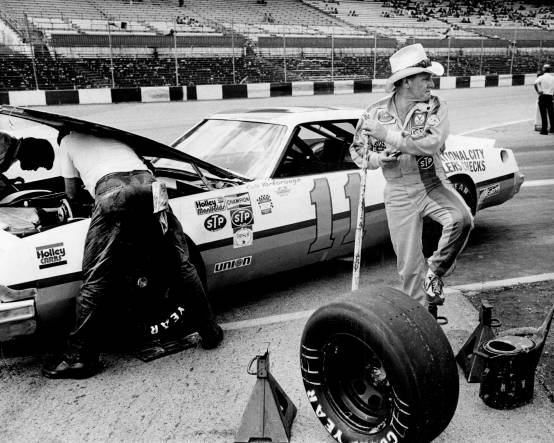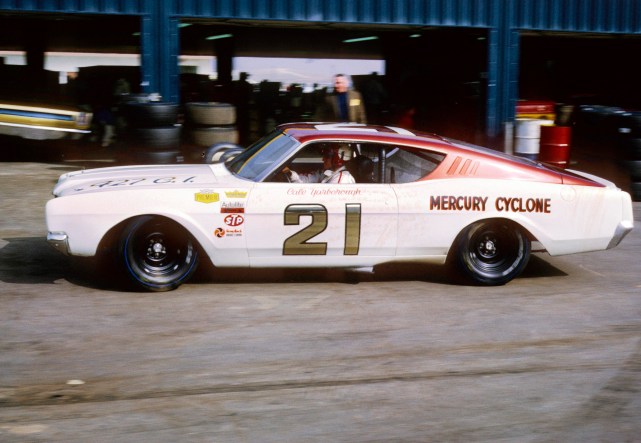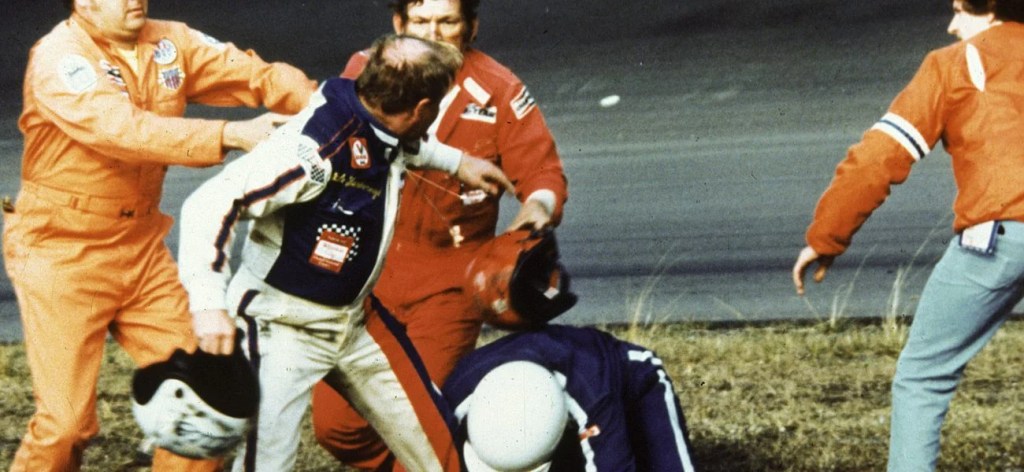
If there was a NASCAR Mount Rushmore, Cale Yarborough would certainly be on it.
A hard-driving, no-nonsense racer from Sardis, South Carolina, Yarbrough captured three NASCAR Cup Series from 1976-78. He died on Sunday at 84.
Yarborough also captured four victories in the Daytona 500 and five in the Southern 500, NASCAR’s two most prestigious races, second best for each event.

The rest of his life is a blend of Stock Car accomplishment and legends that may or may not be true. He was a larger than life human being that made you not want to believe otherwise the feats of accomplishment away from the race track — stories that he survived a lightning strike, flew and landed a plane with no training and plucked water moccasins and wrestled alligators in the swamps of South Carolina.
He certainly looked like such a man.
More impressive than the races and championships he won is those he chose not to pursue. Yarborough only raced full-time from 1973 to 1980. And yet, he still won 83 races, tied with Jimmie Johnson for sixth on the all-time wins list.
When he raced, he was literally the man to beat. He led 26.5 percent of all laps he participated in, a Modern Era record. He was unrivaled.
“Cale Yarborough was one of the toughest competitors NASCAR has ever seen,” said NASCAR Chairman & CEO Jim France in a statement. “His combination of talent, grit and determination separated Cale from his peers, both on the track and in the record book. He was respected and admired by competitors and fans alike and was as comfortable behind the wheel of a tractor as he was behind the wheel of a stock car. On behalf of the France family and NASCAR, I offer my deepest condolences to the family and friends of Cale Yarborough.”

Born William Caleb Yarborough on March 27, 1939, he was the oldest of three boys raised by Julian and Annie Yarborough in Florence County, South Carolina.
The family farmed tobacco and cotton and Cale worked the land as soon as he was old enough to. Julian was killed in a private plane crash when Cale was 11 and the oldest son took on a great responsibility with the property. He was a man’s man before he was even legally a man.
He played football and was an amateur boxer in high school.
By time he was a legal adult, he was an experience farmer, business man and went on to serve on the Florence County Council. He was revered by everyone who knew him even before he started driving race cars.
He made his Cup debut in 1957 as a teenager, finishing 42nd, but drew the ire of NASCAR for forging his age. He told NASCAR he was 21 but it was discovered midrace that he was younger than 20 and NASCAR waved him off the track.
He struggled to find a competitive car in those early seasons, and took jobs in logging and turkey farming to pay the bills and support wife Betty Jo, who he married at 22. By the mid-1960s, Yarborough had forged a relationship with Ford and team owner Banjo Matthews.
Yarborough scored his first Cup win at Valdosta Speedway in Georgia, driving part-time for Kenny Myler in 1965, but really took off a contender when he signed with Wood Brothers Racing. He earned his first Daytona 500 winner in 1968. He won his first Southern 500 later that season as well.

He won 13 times with Wood Brothers but was left again looking for a competitive ride when Ford pulled its factory support. He then added to the legend by racing Indy cars in the early 70s with team owner Gene White.
He raced the Indianapolis 500 four times with a best finish of 10th in 1972. In those days, merely making the field was a big deal, much less scoring a top-10.
It was with Richard Howard and Junior Johnson that Yarborough raced full-time for and built up the bulk of his accolades — 55 wins, 39 pole positions and the run to three Cup Series titles. He was also the championship runner-up in three other seasons during that span, finishing second to Benny Parsons (1973), Richard Petty (1974) and Dale Earnhardt (1980).
Yarborough also was involved in NASCAR’s most iconic finish during that stretch in the 1979 Daytona 500. He was involved in a last lap crash with Donnie Allison, racing for the win, that allowed Petty to score the win. Yarborough fought with both Donnie and brother Allison at the crash site in the infield.
A majority of the Eastern Seaboard was snowed in that day and the race was one of the few broadcast flag-to-flag on CBS and it catapulted NASCAR to the mainstream.

In his 40s, in the 1980s, Yarborough chose to scale back his schedule due to a desire to spend more time with his family. He won multiple races in each of the first five years as a part-time driver and that included back-to-back Daytona 500 wins in 1983 and 1984.
The 1983 win was especially remarkable because he crashed his car in qualifying, already on a pole run, but wanting to go even faster and flipped the car. He won with a backup ride.
Yarborough spent the next 11 years involved in Cup Series team ownership, with a rotation of drivers filling the seat. John Andretti gave Yarborough his only win as a car owner, prevailing in Daytona’s 400-miler in July 1997.
The final segment of his life was spent on his 4,000 acre farm in South Carolina, where he made sporadic appearances during race weekends at Darlington. He owned numerous businesses after racing, a testament to those lessons learned after his father passed.
He was an icon and one of NASCAR’s all-time great personalities and racers.
Matt Weaver is a Motorsports Insider for Sportsnaut. Follow him on Twitter.